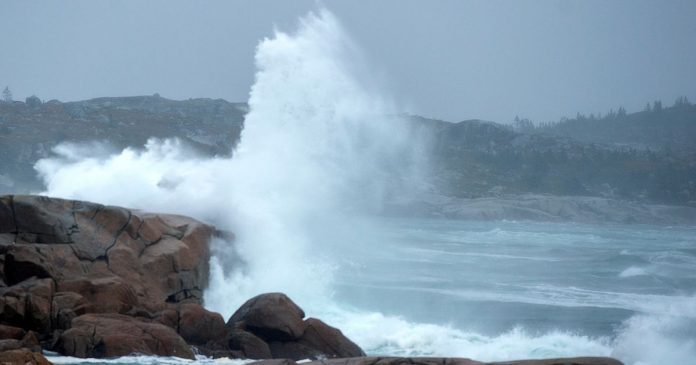Post-tropical storm Teddy made landfall in eastern Nova Scotia Wednesday morning bringing strong winds and plenty of rain for the province.
Environment Canada’s hurricane monitoring centre reported very strong winds as Teddy maid landfall near Sheet Harbour. Hart Island reported a peak wind of 108 km/h and a gust to 104 km/h in Eskasoni, on Cape Breton Island, the agency said.
The winds caused dozens of power outages across Nova Scotia affecting thousands of residents, according to Nova Scotia Power. As of just after 11 a.m., about 19,400 customers were still without power.
The utility said its crews are working to restore power to all customers affected by the outages.
A big thanks to the crews that worked overnight in the heavy rain and wind, restoring outages caused by #HurricaneTeddy.
Today, we’re back at it again! In this video, we captured our crews preparing to hit the road just after 5:00am this morning (coffees in hand!). #NSstorm pic.twitter.com/RhFEWGMUsx
— Nova Scotia Power (@nspowerinc) September 23, 2020
The Nova Scotia Emergency Management Office warned residents of Guysborough County and Cape Breton Island that Teddy is still bringing dangerous storm conditions as it tracks towards Cape Breton.
“As Teddy continues to impact our province today, please continue to avoid the coastline, be cautious on the roads, and follow weather updates,” emergency management authorities urged Nova Scotians on social media.
The storm will weaken as it travels across eastern Nova Scotia and into the southeastern Gulf of St. Lawrence late Wednesday morning.
Wind and tropical storm warnings are in effect for most of the Atlantic coastline of Nova Scotia from Halifax to Cape Breton, where wind gusts of 80 to 110 km/h are expected, according to Environment Canada.
Large swells will continue along the Atlantic coast Wednesday morning with waves of eight to 10 metres and breaking higher along parts of the coast.
“The highest risk is the combination of the very large waves combining with the storm surge to cause dangerous conditions along the Atlantic coasts of Nova Scotia and Newfoundland,” Environment Canada said.
Rough and pounding surf, localised flooding and coastal infrastructure damage and erosion are likely in vulnerable areas, even outside of the times of high tide, it added.
































